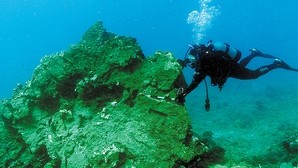From Marti:
Hearings tonight:
1/11 (Tuesday) at Hilo Intermediate 6-9pm
1/12 (Wednesday) at Waimea Elementary and Intermediate 5:30-9pm
This week, the U.S. Army is holding two hearings on its plan to expand operations at Pohakuloa Training Area to include risky high-altitude helicopter training on the sacred slopes of Mauna Kea and Mauna Loa. If can, please attend a hearing near you, and pass along the word to others!
This type of high-altitude military training exercise caused a crash in the Mauna Kea Ice Age Natural Area Reserve in 2003, where an irreplaceable cultural and natural area was damaged.
So far, the U.S. Army has done very little study on how these activities will impact irreplacable cultural and natural resources, endangered species, access, cultural practice, or hiking/recreation on the slopes of Mauna Kea.
You can find more details and talking points below. Please let the Army know that Hawai`i demands better for our sacred mountains.
Mahalo nui,
Marti
Proposed Action: High-elevation, high-risk helicopter training exercises in the protected forest reserves of Mauna Kea
– The proposed project area encompasses the Kīpuka ‘Āinahou Nene Wildlife Sanctuary, Palila bird critical habitat, a Native bird flight corridor, game management areas, as well as the habitat for twenty-one plant, thirteen insect, and ten bird and mammal species under state and/ or federal protection.
– Similar attack helicopter training exercises in Hawai`i have resulted in numerous crashes, injuries and fatalities. In 2009, the CAB lost two pilots when their Kiowa Warrior helicopters took a “hard landing” and crashed in flames near Schofield Barracks. Two other army aviators died when their Cobra helicopter malfunctioned over Schofield in 1996. Six soldiers (4 of whom were from the CAB) were killed and 11 injured when two Black Hawk helicopters collided during a night training exercise over Kahuku in 2001.
Talking Points:
– Environmental Assessment is Inadequate: The Army’s Environmental Assessment is not forthcoming about the threats expanded military exercises on Mauna Kea pose to Native Hawaiian rights, fragile ecosystems, nor to other recreational uses of the area. Nor does it detail mechanisms whereby the Army can be held accountable.
– Require an Environmental Impact Statement: The Army must complete a full environmental impact statement — not the minimal environmental assessment conducted so far — on all of the Army training at PTA. This EIS must include a cumulative impact assessment of all land uses threatening Mauna Kea (like the new giant telescope proposal). The EA fails to adequately analyze: (1) noise impacts, (2) risks to recreational users, (3) threats to protected and endangered species in the project area.
– Require a Cultural Impact Assessment: This EIS should also satisfy Hawaii’s state environmental reporting requirement for a cultural impact assessment. The Army’s EA notes some historic properties of cultural significance in the landing zones. Instead of studying these areas more closely, the Army’s EA relies on the 2009 University of Hawaii Comprehensive Management Plan.
– Mitigate Accidents: This type of high-risk trainings have been linked to many accidents. In 2003, the exact same kind of training resulted in a helicopter crash in the Mauna Kea Ice Age NARS.
As people who love and care for our beloved Mauna Kea, your testimony can help to protect this area from the harms of these dangerous military exercises. Please attend these important hearings and spread the word!




 And, on the South shore of Oahu, controversy is brewing as the state attempts to hold the Navy financially responsible for the carnage of coral from the USS Port Royal grounding in February 2009. Ten acres of ancient coral was destroyed! Chunks as large as cars are still bouncing around on the ocean floor causing further damage.
And, on the South shore of Oahu, controversy is brewing as the state attempts to hold the Navy financially responsible for the carnage of coral from the USS Port Royal grounding in February 2009. Ten acres of ancient coral was destroyed! Chunks as large as cars are still bouncing around on the ocean floor causing further damage. If Kitty Simonds (WESPAC Exec.) really believes what she wrote in this Sunday-Editorial, then this woman needs to take a good look in the mirror. She calls out the U.S. military for the harm its presence causes the people of the Pacific, when WESPAC’s own mismanagement over the last 25 years has decimated multiple fisheries here.
If Kitty Simonds (WESPAC Exec.) really believes what she wrote in this Sunday-Editorial, then this woman needs to take a good look in the mirror. She calls out the U.S. military for the harm its presence causes the people of the Pacific, when WESPAC’s own mismanagement over the last 25 years has decimated multiple fisheries here.




